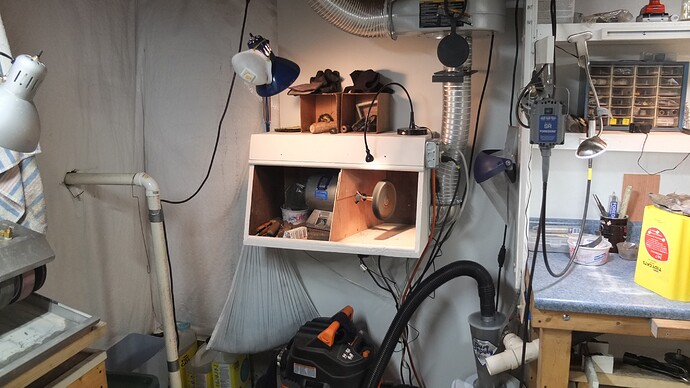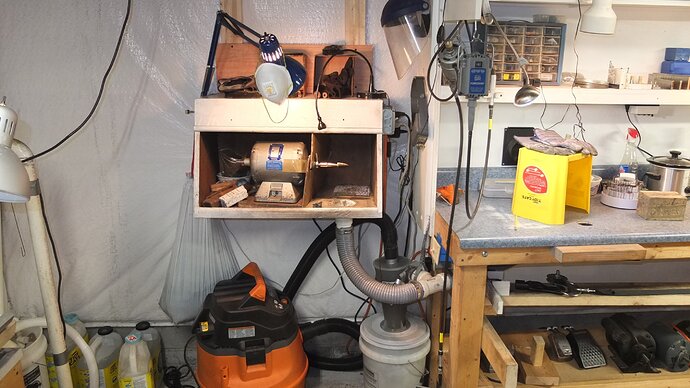Last week I wrote that one of my polishing motor bearings was
failing. It turns out that my motor is fine. Apparently one of the
spindle removal collars was rattling and in my hearing aids it
sounded like a bad bearing.
Since I had the hood apart, I decided to try a modification to deal
with all the fine dust that was collecting on all the surfaces of my
shop. At the suggestion of another Orchid member, I proceeded to
pound a hole in the cellar masonry wall. I had been planning this for
some time. My plan was to somehow get the polishing hood exhaust and
fine dust going outside rather than back into my shop. I also wanted
to clean up the area and enclose all the supports with a painted
piece of plywood so it would match the rest of the shop. Attached are
before and after pictures of the polishing area. You will notice that
I installed a 680 CFM blower (4" suction, 5" exhaust) on the wall
behind my polishing hood exhausting thru a 6" duct to the outside.
The suction port is towards the back of the hood and I added a
partition to the inside of the hood greatly reducing the volume of
air that the suction port interacts with. This creates a large net
flow of air towards the back of the hood even when I run a 6" wheel
that wants to throw air out of the hood. I put a small piece of
screen over the suction port so that I can collect the duff. I
realize that I will lose some metal this way, but it is worth it
having a cleaner and safer shop. I now only run the flexshaft/grinder
debris thru the cyclone. It is powered by a shop vac which is in a
location such that I can also use it to clean the duff from the
suction screen collecting it in the shop vac. Previously, both the
polishing hood debris and flexshaft/grinding debris went thru the
cyclone and into the shop vac. A lot of polishing fine dust made it
thru the shop vac and made a real mess of the shop. Hopefully, this
dust will go thru the blower and outside. If this all works, I will
replace the metal flex hose with solid duct, securely mount the blast
gate and see if I can also power the cyclone with the blower. Now I
have to figure out a way to spend the $1,800 that I was going to
spend on new polishing equipment. I am thinking the small pulse arc
welder that just came on to the market. If anyone has experience with
one of these welders, I would appreciate the benefit of it.
Thanks. Rob


